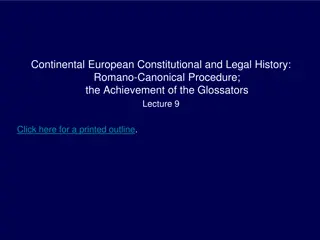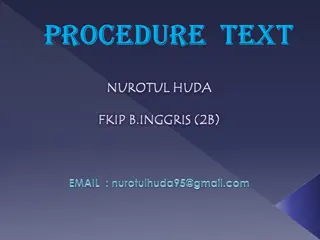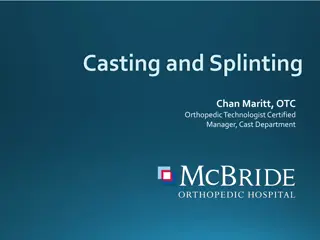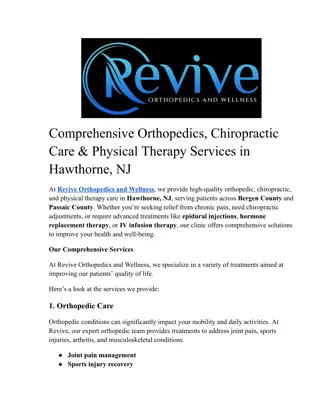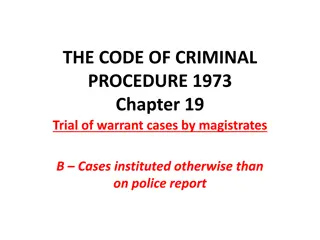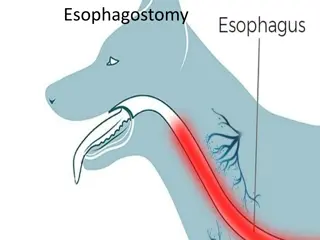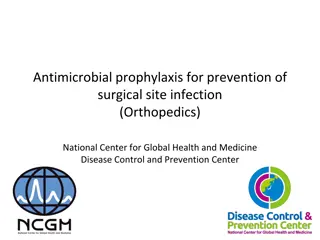Guide to Arthrocentesis Procedure in Orthopedics
Arthrocentesis is a valuable procedure used in orthopedics for various purposes such as diagnosing joint diseases, instilling medications, confirming injuries, and relieving pain. This guide covers indications, contraindications, equipment needed, and specific landmarks for joint access, including the first carpometacarpal, interphalangeal, metacarpophalangeal, and wrist joints.
Download Presentation

Please find below an Image/Link to download the presentation.
The content on the website is provided AS IS for your information and personal use only. It may not be sold, licensed, or shared on other websites without obtaining consent from the author.If you encounter any issues during the download, it is possible that the publisher has removed the file from their server.
You are allowed to download the files provided on this website for personal or commercial use, subject to the condition that they are used lawfully. All files are the property of their respective owners.
The content on the website is provided AS IS for your information and personal use only. It may not be sold, licensed, or shared on other websites without obtaining consent from the author.
E N D
Presentation Transcript
Procedures: Arthrocentesis ORTHO CURRICULUM
Indications Diagnosis of joint disease by synovial fluid analysis (gout, septic arthritis) Local instillation of medications into a joint for inflammatory disease Diagnosis of ligamentous or bony injury by confirming presence of blood in the joint Relief of painful hemarthrosis and effusion
Contraindications Overlying skin infection Known bacteremia Caution with bleeding disorders
Equipment 10-30cc syringe (depending on size of effusion) 18-22ga needle 1% lidocaine with 25-27ga needle and 10cc syringe Chlorhexidine Sterile gloves Specimen cup Culture bottles Lavender tube Light green tube
First Carpometacarpal Joint Landmark: radial aspect of the proximal end of the first metacarpal Abductor pollicis longus (APL) tendon is located by active extension of the tendon Oppose the thumb against the little finger, palpate the prox end of the 1stmetacarpal Needle insertion: proximal to the prominence at the base of the 1stmetacarpal, on the palmar side of the APL tendon
Interphalangeal and Metacarpophalangeal Joints Landmarks: dorsal surface MCP: prominence at the proximal end of the proximal phalanx Interphalangeal: prominence at the proximal end of the middle or distal phalanx Flex the fingers to 15-20 degrees, apply traction Needle insertion: into the joint space dorsally, just medial or lateral to the extensor tendon
Wrist Landmarks: dorsal radial tubercle (Lister's tubercle) in the center of the dorsal aspect of the distal end of the radius Extensor pollicis longus tendon is in a groove on the radial side of the tubercle Palpate the EPL by active extension of the wrist and thumb Flex hand to 20-30 degrees with accompanying ulnar deviation, apply traction Needle insertion: just distal to the dorsal tubercle on the ulnar side of the EPL
Elbow Landmarks: depression between the radial head and the lateral epicondyle of the humerus (with elbow extended) After palpation, flex the elbow to 90 degrees, pronate the forearm, and place the palm flat on a table Needle insertion: from the lateral aspect just distal to the lateral epicondyle and directed medially
Shoulder Landmarks: (anterior approach) palpate the coracoid process medially and the proximal humerus laterally Patient sits upright, arm at side Needle insertion: inferior and lateral to the coracoid process, direct needle posteriorly
Knee Landmarks: medial surface of the patella at the middle or superior portion of the patella Position patient either in full extension or with knee flexed to 15- 20 degrees, placing a roll under popliteal region Needle insertion: midpoint or superior portion of the patella approx 1 cm medial to the anteromedial patellar edge Direct the needle between the posterior surface of the patella and the intercondylar femoral notch Keep needle parallel to the bed
Ankle Landmarks: medial malleolar sulcus is bordered medially by the medial malleolus and laterally by the anterior tibial tendon Identify tendon by dorsiflexing the foot Position the patient supine with the foot in plantar flexion Needle insertion: medial to the anterior tibial tendon and directed into the hollow at the anterior edge of the medial malleolus Insert needle 2 to 3cm
Metatarsophalangeal and Interphalangeal Joints 1stdigit: distal metatarsal head and the proximal base of the first phalanx Other digits: prominences at the proximal interphalangeal and distal interphalangeal joints Patient in supine position, flex toes to 15-20 degrees apply traction Needle insertion: dorsal surface at a point just medial or lateral to the extensor tendon
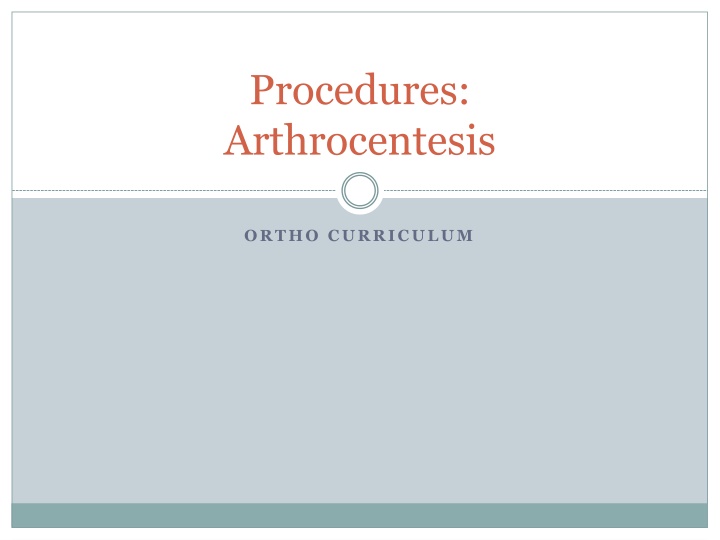





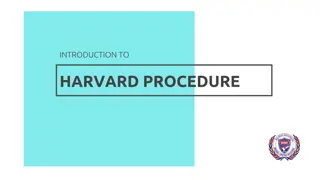

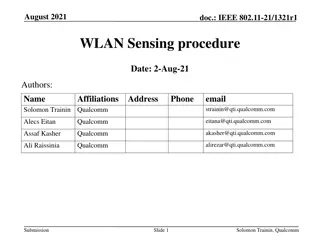
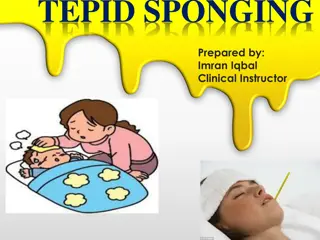
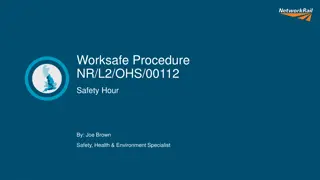
![Briefing on the Criminal Procedure Amendment Bill [B12-2021] to the Portfolio Committee on Justice and Correctional Services](/thumb/157093/briefing-on-the-criminal-procedure-amendment-bill-b12-2021-to-the-portfolio-committee-on-justice-and-correctional-services.jpg)
